Cutting-Edge DSLR In All Aspects
by Don Sutherland
Published February 2008
We don’t expect it to last long, but for the moment, as this is written, the Panasonic Lumix DMC-L10 is the most technically-sophisticated digital SLR on the market. It comes with all the cutting-edge features that have become practically standards in this camera’s range — dust-reduction, image-stabilization and Live View LCD monitor, all found regularly now, in various combinations. The Lumix L10 goes on from there.
It was the first Live View camera with a pivoting/rotating monitor screen (there’s now a second), and it’s the first and only (as of press time) DSLR to provide face detection for focus tracking. None of these features existed five years ago and now they’re all over. The L10 is the one at the moment that has the largest collection of them and they form a very formidable picture-taking machine.
Even when the market catches-up, the L10 should be a very attractive choice for reasons besides the cutting-edge features. It is a well thought-out camera. It’s easy to work with and it produces an excellent picture.
It’s also a completely new style of product, as far as the Panasonic DSLR line goes. Its predecessor was the Lumix L1, a lush and delicious camera to handle, highly praised for its picture-taking qualities. It would be reasonable to expect the next product to be an up�grade, the same model with more pixels (and that much is true — the L1 had a little over 7MP, the L10 has a little over 10MP for pictures measuring 3648x2736 pixels).
Rather than a “deluxified” encore of the original Lumix DSLR, however, the L10 has a more down-to-earth construction which is attractive enough, and intelligently set-up, but does not leave you drooling quite like the L1 does. The earlier model was co-marketed by Leica, in traditional Leica silver/black finish, as a super-deluxe edition. The all-black Panasonic was no less svelte, just all-black (as many Leica cameras themselves have been) where it’s the “classic Leica” finish that sets Leicaphile hearts aflutter.
The opening price of the Lumix L10 was about $600 less than the opening price of the L1, despite the additional pixels and the added features — very hot features, in our book.
If the new Lumix L10 resembles any other camera, it’s something like recent Olympus models in look and feel — the Evolt E-510, for example, which like the Panasonics is a Four Thirds format camera. The Panasonic is a bit beefier, but from a distance they don’t look unalike. On close-up, though, the L10 shows-off some tricks of its own.
The Smart Angle
A Live View monitor has a number of handy uses, the largest number when the monitor is articulated. Thanks to a hinge or a pivot, you gain the ability to frame pictures at arm’s length from the camera, at odd angles if required — holding it overhead or down on the floor for some perfectly good reason. Such a viewfinder proved to be tremendously useful in video camcorders and permanent-lens digicams.
Manufacturers insisted for years that optical and electronic through-the-lens viewing systems were fatally incompatible. Then, about two years ago, Live View monitors began busting out all over the DSLR range — high-end ($5k and up), low-end ($1k and down) and middle-range, the range the Lumix L10 inhabits. Most of the Live View monitor screens were permanently positioned, however. That confined the angles and distances at which you could use them. They were better than nothing, but not much.
The L10’s pivoting live view screen introduces many novelties. Chief among them, it can be closed — turned around to face the back of the camera and snapped shut. Presto, it’s protected between uses.
It can also be flopped over against the back, looking just like the flush-mounted screens of the other DSLRs.
And, it can be opened and angled upward, so you can look at it from above; or angled downward so you can look from below, angled sideways and backwards, enabling the camera to be placed in settings and at angles you wouldn’t have considered before. Without a movable viewfinder like this, you’d be left shooting blind. It also lets you set-up self-portraits.
It’s not a great leap forward in camera technology, but it’s a valuable deployment of stuff that was on the shelf, adding considerably to the camera’s adaptability.
That it would do so was plainly anticipated by the designers, who understood that a user in the field might want to switch intermittently between viewing the action on the monitor screen, and in the optical SLR viewfinder.
It’s possible to arrange the L10 to provide a live view on the monitor as long as it’s open. Using Live View, the viewfinder mirror must be held out of the way, rendering the SLR viewfinder blank. But when you close the monitor, the mirror automatically returns to viewing position. Opening and closing the articulated monitor is itself a switch, which converts the camera between its two modes of viewing. It’s an insightful way to design a viewing system, switching between viewing modes becoming literally a snap.
There are additional smart tricks you can play with the L10’s Live View. With the screen open and activated, it’s possible to switch instantaneously between the scene before the lens, and the scenes already stored in the memory card. You can cut back and forth on the same screen to compare.
Why bother? Well, sometimes you might want to see if a small change in a set-up improves the last picture you took — you can compare. Sometimes you might want to see how the same place looks at different times of day, or week, or year. You might want to see how your street compares to a picture made of it a hundred years ago. Any digital image, including scanned century-old photos, can be written to an SD card. With that in the camera, making an exact match between the two scenes, from the standpoint of position and perspective, would be quick work despite the century between them. Never before have SLR cameras allowed you to see the last picture you took and the next one, in the same viewfinder.
It’s not the kind of thing you do every day. But it is the kind of thing that pops up as an idea, when the potential to do it is part of the camera. A million other new ideas can come to mind, lots of new tricks for old dogs.
As liberating as feature like the pivoting monitor may be, its uses shouldn’t be overstated. We’ve read a few articles by experts saying that the many different color looks the camera can deliver can be previewed on the screen, for both contrast and tint. Besides the customary hue and saturation control, the L10 provides quite a few color schemes that emulate famous films of yore.
Well, maybe. Experts say this, but Panasonic doesn’t. You can evaluate composition perfectly on the L10’s monitor, but as to color, the camera’s manual says (pg. 59): “The brightness of the LCD monitor may differ from the brightness of the recorded pictures, especially when recording in dark places.” Brightness, of course, has a lot to do with the way colors look.
Face Detection and IS
Face detection is one of the new children of the opto-digital age, but it has a tremendous potential in a camera. It permits the sensing system to find faces in the scene, and use them as the basis of focus settings. The premise assumes that a face will be a more important part of a picture than a window, say, or a flowerpot, not an unsafe assumption.
Without face-detection, people who are located elsewhere in the frame than where your AF sensors are looking require extra steps. You’d have to move the camera to line up the AF with the subject, let the AF set the focus, press the AF lock and revert to your planned composition. With face detection, the system resets the AF sensors for you, for the faces in the picture. It’s faster and less intrusive into the process of taking pictures.
The Lumix L10 is promoted as an image-stabilized camera, because the excellent Vario-Elmar 14-50mm f/3.8-5.6 lens that comes with it incorporates Panasonic’s MEGA OIS stabilization system. Panasonic claims its performance is superior to that delivered by in-body image-stabilization systems suddenly so common (our tests were inconclusive), but it comes off if you change lenses. There are a large number of excellent Four-Thirds lenses that will mount on the L10, most of them by Olympus, but they are not image-stabilized.
Alongside the upper-right quadrant of the exposure-mode dial is the switch that selects between single, burst (3 fps maximum), bracketed and delayed images (that is, the camera self-timer). It’s also close to the shutter button, meaning you have to be careful not to accidentally nudge it with your trigger finger. This much could probably be better-designed, but as it is, you can get used to it.�
- Size/Weight: 5-5/16 X 3-13/16 X 3-1/16 inches; 34.3 ounces w/lens and battery.
- Image Sensor: Four Thirds format, 10.1-megapixel.
- Maximum picture size: 3648x2736 pixels.
- Zoom: Kit lens 14-50mm f/3.8-5.6 Vario-Elmaar.
- Lens Focal Length: Interchangeable.
- Focusing capability: Full AF with user-selectable sensor areas, plus face-detection.
- Display: 2.5-inch LCD, approx. 207,000 pixels.
- Exposure Control: Manual, Programmed, Automatic, Shutter priority, Aperture priority 1-minute to 1/8000 second, plus B (up to eight minutes).
- Exposure Metering: TTL.
- Power Source: Proprietary Li-Ion.
- Display: 2.5-inch LCD, approx. 207,000 pixels.
- Exposure Metering: TTL.
- Power Source: Proprietary Li-Ion.
- Special Features: Live View technology for previewing images before capturing; Face Detection (unique in DSLRs) for helping focusing on faces; MEGA-OIS Optical Image Stabilization present in the Leica Vario-Elmar zoom lens.
- Warranty: 1 year.
- Contact: www.panasonic.com
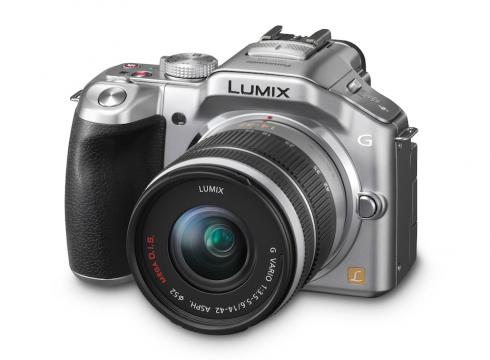 Panasonic has announced the latest in their Lumix G lineup of mirrorless, interchangeable lens cameras---the Lumix DMC-G5. Among the updates from the G5's predecessor, the G3, is a 920,000 dot resolution, 3-inch, rotating rear LCD, which is equipped with a new Touch AF function that let's you set the focus on any point in the framed shot with a swipe of your finger. The camera also has an electronic viewfinder (EVF) that offers 100% field of view as well as a new Electronic Shutter mode for silent operation in quiet places. The 16-megapixel G5 also shoots full HD video and records to MP4 format, and the Touch AF function also works during video capture.
Panasonic has announced the latest in their Lumix G lineup of mirrorless, interchangeable lens cameras---the Lumix DMC-G5. Among the updates from the G5's predecessor, the G3, is a 920,000 dot resolution, 3-inch, rotating rear LCD, which is equipped with a new Touch AF function that let's you set the focus on any point in the framed shot with a swipe of your finger. The camera also has an electronic viewfinder (EVF) that offers 100% field of view as well as a new Electronic Shutter mode for silent operation in quiet places. The 16-megapixel G5 also shoots full HD video and records to MP4 format, and the Touch AF function also works during video capture.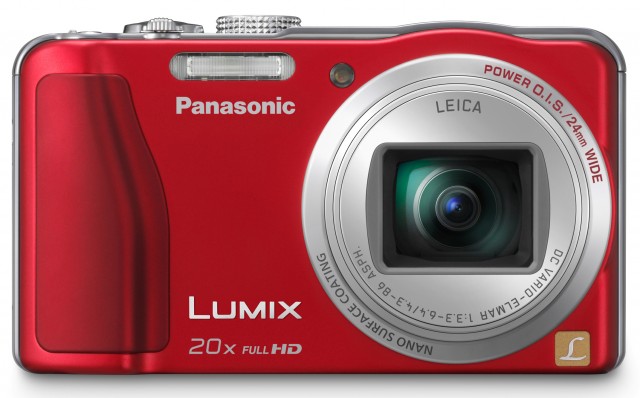
)-1WebA1001001A11J26B20021E54553](http://static1.squarespace.com/static/53486416e4b0531dce75ef83/5525bdade4b060d6c68bb436/5525be01e4b060d6c68bcff5/1320748430000/DMC-3D1E-K-Additional_WebImage__HiRes-Image-4Europe-1WebA1001001A11J26B20021E54553.jpg?format=original)
)-1WebA1001001A11J26B20011B81598](http://static1.squarespace.com/static/53486416e4b0531dce75ef83/5525bdade4b060d6c68bb436/5525be01e4b060d6c68bcff8/1320748431000/DMC-3D1E-K-HiRes-Image__Image-1Europe-1WebA1001001A11J26B20011B81598.jpg?format=original)






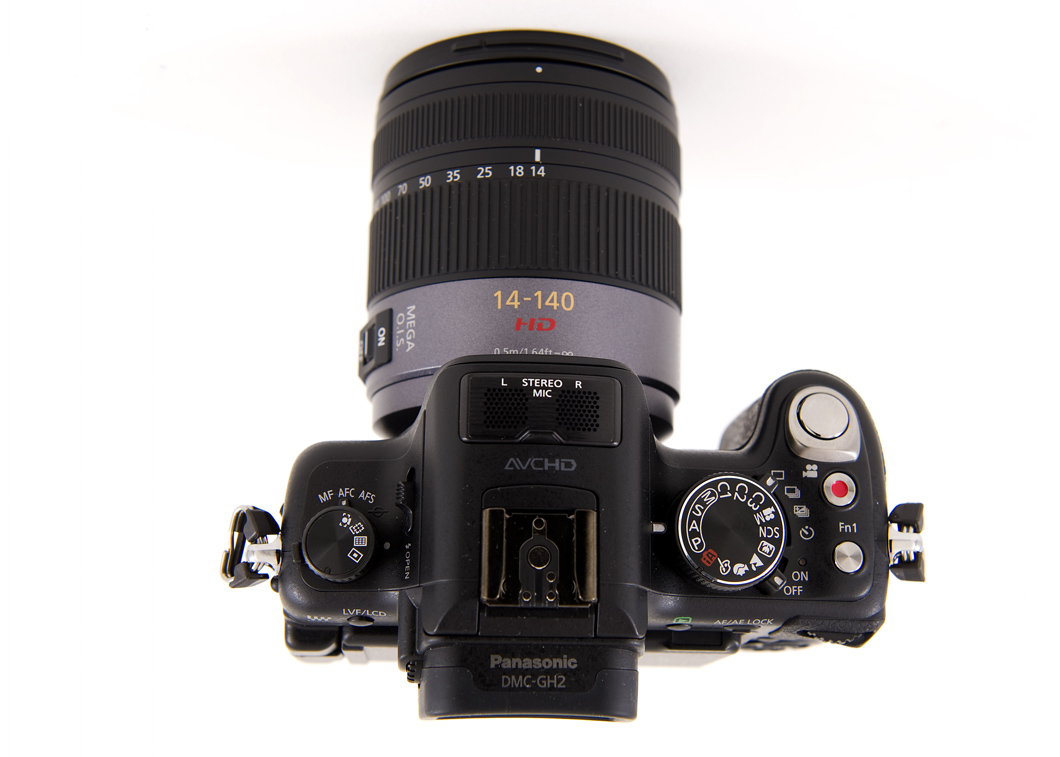
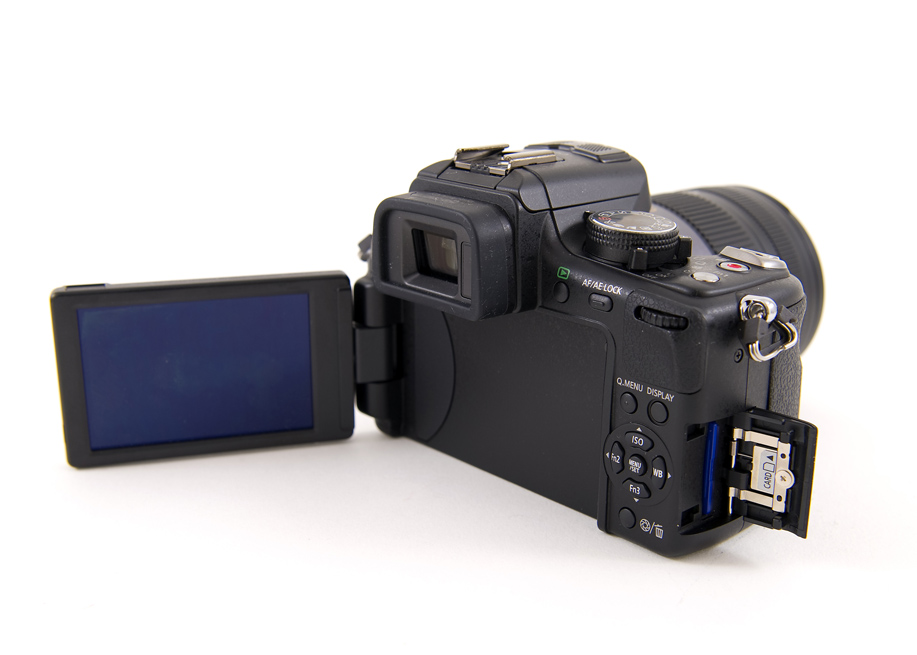
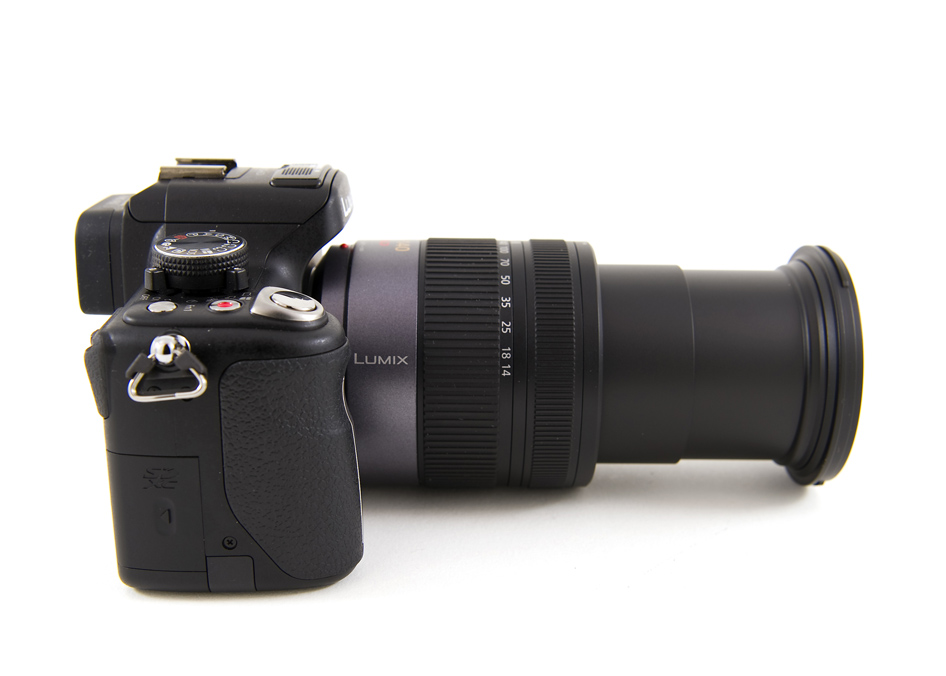











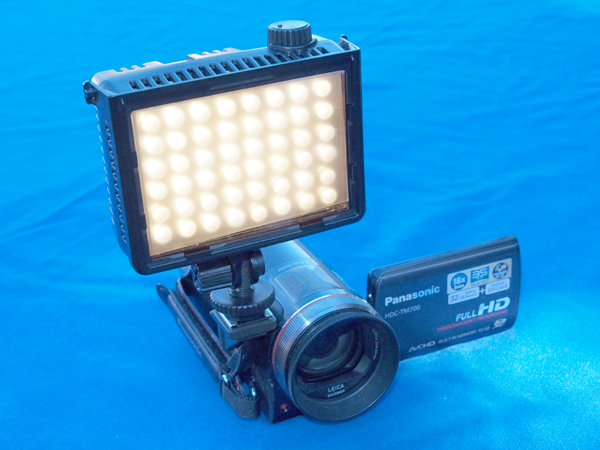


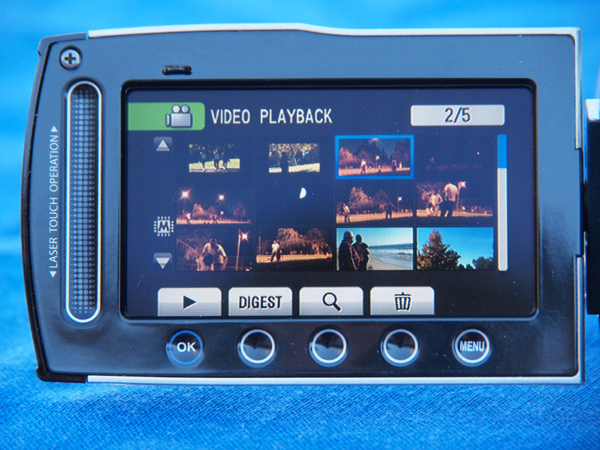












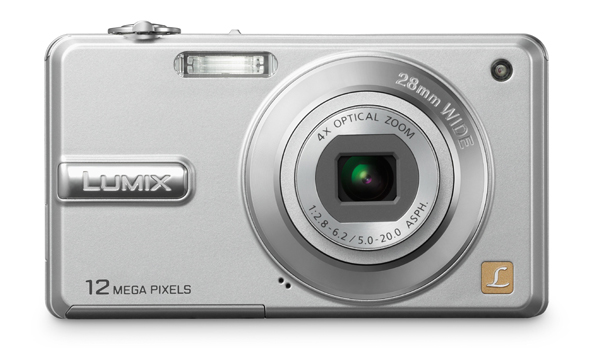
 Panasonic has announced a lot of new products at PMA, but besides the Lumix GH1, which I already gushed over
Panasonic has announced a lot of new products at PMA, but besides the Lumix GH1, which I already gushed over 








 After a whirlwind opening day at CES, I have reports on brand new products from Sony, DXG, Digital Foci, HP, iomega and an up close look at a revolutionary Panasonic camera. My favorite product of the day was Sony's just announced
After a whirlwind opening day at CES, I have reports on brand new products from Sony, DXG, Digital Foci, HP, iomega and an up close look at a revolutionary Panasonic camera. My favorite product of the day was Sony's just announced 



